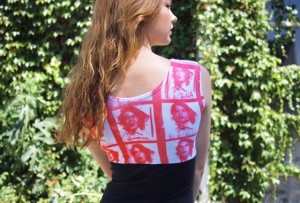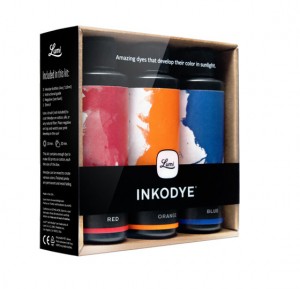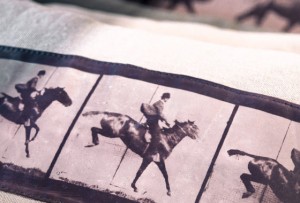 When two enterprising designers wanted to raise $50,000 to bring their new Lumi Printing system to market, they turned to Kickstarter. Their idea proved to be so popular, the campaign has attracted more than $268,000 from 3,525 backers.
When two enterprising designers wanted to raise $50,000 to bring their new Lumi Printing system to market, they turned to Kickstarter. Their idea proved to be so popular, the campaign has attracted more than $268,000 from 3,525 backers.
The Lumi Process is a photographic print process that you can use to turn smartphone pictures into beautiful designs on textiles, wood, and other natural materials used in art, fashion, and furniture design. In addition to printing on 100% cotton T-shirts, the process works on delicate materials such as silk, suede and wool that can’t go through heat-setting stages. You can also use the Lumi process to print images and design on rough materials such as burlap, jute and sewn garments. Once fixed, the color becomes permanent and can go through repeated machine washes without fading.
The contact-negative print process uses Inkodye mixable, water-based dyes that develop their color in sunlight. There is no need for electricity, silkscreens, or high-end equipment. Inkodye is currently available in three colors: red, orange and blue.
To see how the process works, watch the fund-raising video Lumi produced for their Kickstarter campaign (below) or read the illustrated step-by-step guide: How to Print a Photo on Cotton with Inkodye.
Kickstarter backers of the Lumi Printing System will receive different configurations of  Inkodye Starter Kit, depending on their level of contributions. The basic Starter Kit includes 4-ounce bottles of each color, instructions, a vignette-shaped stencil, and a negative that you can cut out and start experimenting with. The Full System Kit includes a textile detergent and 11 x 17-inch sheets of film that have been specially coated to make negatives on laser printers or copiers. The coating on the Lumi transparency film is designed to absorb more toner than typical transparency. Each Lumi transparency sheet is backed with a carrier sheet of paper so that it will feed through typical copiers more effectively.
Inkodye Starter Kit, depending on their level of contributions. The basic Starter Kit includes 4-ounce bottles of each color, instructions, a vignette-shaped stencil, and a negative that you can cut out and start experimenting with. The Full System Kit includes a textile detergent and 11 x 17-inch sheets of film that have been specially coated to make negatives on laser printers or copiers. The coating on the Lumi transparency film is designed to absorb more toner than typical transparency. Each Lumi transparency sheet is backed with a carrier sheet of paper so that it will feed through typical copiers more effectively.
Make Negatives on Your Smartphone
The easiest way to convert images from your smartphone into negatives is to use the Lumityper App that Lumi has developed for the iPhone. (An Android version will be developed in the future.) Lumi’s instruction guide describes other ways to create negatives, such as using web apps such as Pxlr.com or Photoshop on your computer.
After you’ve printed your image or design onto the negative, you apply the dye to the surface of the substrate, then position and secure the negative on top of the substrate. Next, expose the art to sunlight to develop the colors on the substrate. According to the guide for printing a photo on cotton, it takes about 10 to 12 minutes for the image to develop. The process can work on overcast days, but it works best in direct sunlight.
To stop the developing process on textiles, you will need to wash off the unexposed dye in hot water with a strong detergent. Lumi offered its backers a 16 oz. bottle of a detergent specifically formulated to clear residual dye. Regular laundry detergent will work if the item is run through the washing machine twice.
The founders of Lumi, Jesse Genet and Stephan Angoulvant, met while studying product design at the Art Center College for Design in Pasadena, California. On the Lumi website, they state, “We believe photographs shouldn’t be limited to a page or a frame. They’re meant to be lived with, cared for, and last forever. That’s why we create photography you can touch.”
On Kickstarter they stressed that, “We believe in sticking with great ideas through thick and thin and are passionate about developing new creative tools.”
 To see the range of products that designers have created with the Lumi Process, visit the lumi.com website. To Lumi’s progress as they bring this new process to market, follow them on Twitter or Facebook.
To see the range of products that designers have created with the Lumi Process, visit the lumi.com website. To Lumi’s progress as they bring this new process to market, follow them on Twitter or Facebook.
LINKS

